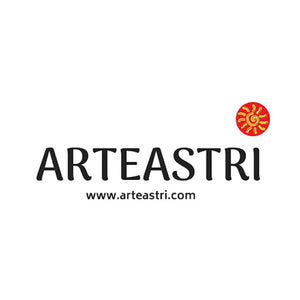Eco- Friendly Fashion| Sustainable Fashion| ArtEastri Fashion
Fashion:
Plays a very important role in today's world. Everything revolves around fashion, from a newborn infant to an elderly person, from our wardrobe to our interior decoration.
But do we wonder how this growing fashion affects our ecosystem, human existence?
Rapid growth in the fashion business boosts sales, but at the expense of our environment. Fashion production, according to reports, accounts for 10% of humanity's carbon emissions, dries up water supplies, and pollutes rivers and streams. Furthermore, according to the United Nations Economic Commission for Europe (UNECE), 85 percent of all textiles are discarded each year, and washing some types of clothing releases a considerable amount of microplastics into the water.
Every article of clothing we buy is made of polyester in some way. Polyester has surpassed cotton in the twenty-first century, according to statistics. Global fiber output in metric tones per year, anticipated until 2030.
It is now imperative that we include sustainable and environmentally friendly fashion into our daily routine.
If we claim that we are unaware of the environmental devastation produced by the fashion industry, we are lying. However, during Covid-19, there is a greater awareness of the importance of sustainability.
While the fashion sector suffered greatly as a result of Covid-19, there are some good aspects as well. As a result of this, consumers have become more aware of what they are purchasing, from where they are purchasing, and how environmentally friendly that product is!
According to The State of Fashion 2021
More than three in five consumers said environmental impact is an important factor in making purchasing decisions.
Despite some players' best efforts, barely 1% of items are recycled into new clothing.
Reducing, recycling, refurbishing, reselling, renting, and repairing are also important to the fashion sector. Garment production is expected to expand by 2.7 percent yearly between now and 2020. ( old data. We are in 2022)
After considering all of these factors, we should all understand that eco-friendly fashion cannot be achieved alone via the efforts of a few individuals.
A More Circular Fashion Industry Will Require a Collective Effort.
As consumers become more engaged with sustainability issues, circularity will be the key that unlocks the door to a more sustainable future.
- by Libbi Lee and Karl-Hendrik Magnus
Two communities, one from the producer side and the other from the consumer side, should collaborate widely.
Every human being on the planet is either a consumer or a producer. Both have a significant impact on the environment.
In the case of producers, how eco-friendly is the product, how long does it last, does it have a beneficial impact on the environment and people, and can it be recycled? When generating anything, all of these characteristics should be considered.
In the case of customers, it is a task to preserve fashion in harmony with the environment as a consumer. But we can't say it's impossible or tough. When purchasing or eating something, there are a few questions we should ask ourselves before taking action. Who makes the product, how is it made, and when is it made? In the process, what kind of febric is used? Is this a long-lasting product? Is that money well spent? What is your relationship with the product? In eco-friendly fashion, the relationship between you and the garments is crucial. We all know that when we form a bond with anything, we tend to keep it for a longer period of time. So, develop a relationship with fashion and consider why you're buying it before you buy it.
Did you like the article?
Share it on Pinterest, Twitter, Facebook.
Also Read
Sustainable Fashion Is The New Normal
